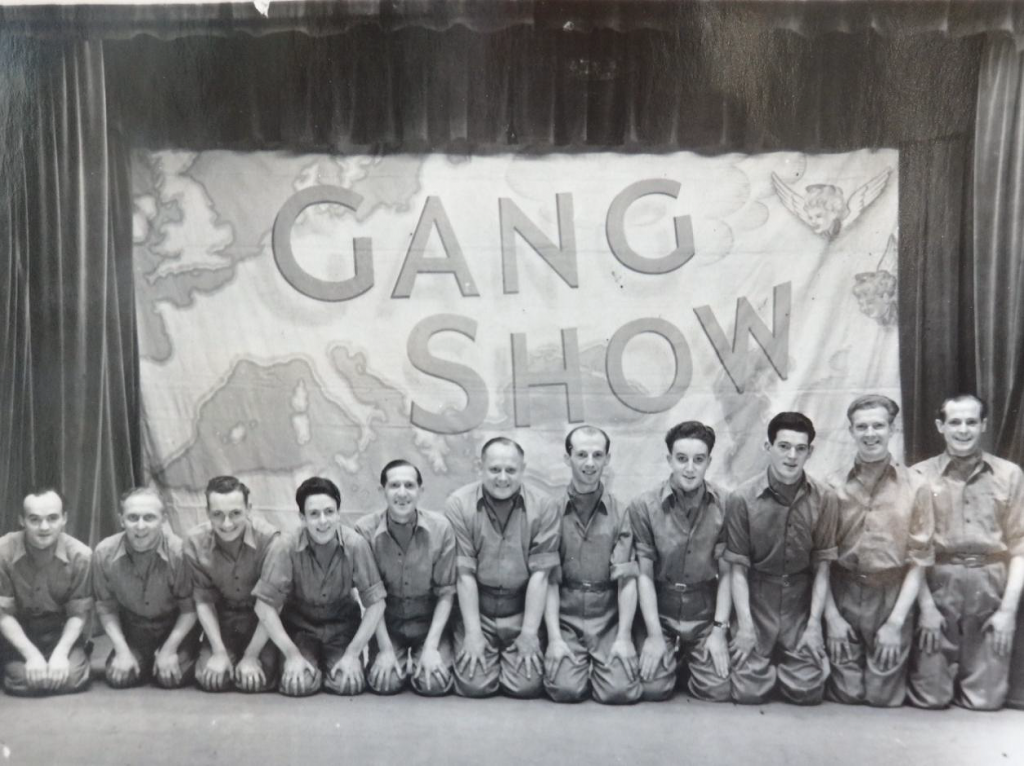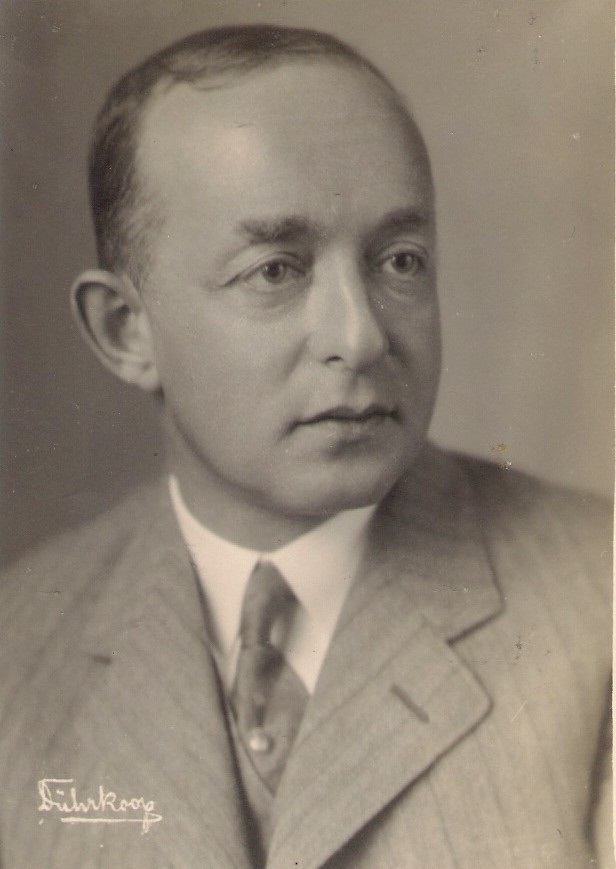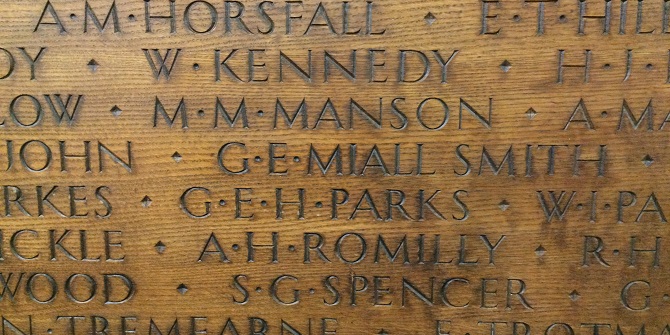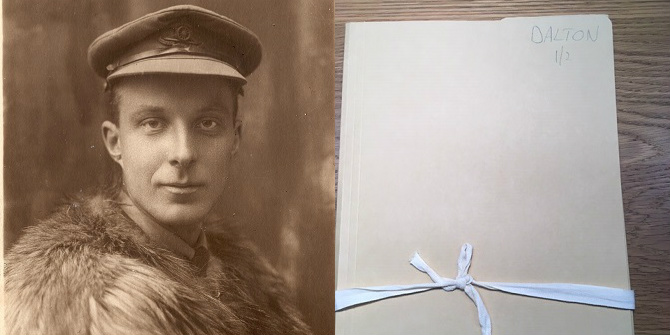Discover the world of RAF “Gang Shows” during the Second World War at LSE, Houghton Street, as told by historian Philippa Brownsword.
During the Second World War, when LSE had evacuated to Cambridge, the Houghton Street premises were occupied by various branches of the Air Ministry. One section based here was the newly-formed Department of Air Force Welfare, which was concerned with all non-combatant aspects of service life. Attached to Welfare were the official RAF Entertainment Units, known as “Gang Shows”.
The British armed forces took entertainment very seriously. They recognised that large numbers of men, posted far away from home and exposed to serious danger and often miserable conditions, needed to be kept occupied and amused when off-duty. Whilst ENSA (Entertainments National Service Association) was sending civilian artistes to the front line, the services each also had their own official concert parties. In the RAF, these were under the supervision of Ralph Reader, impresario of the Boy Scout Gang Shows in the 1930s. Born in Somerset, he had travelled to America in his twenties and worked as a singer, dancer and choreographer on Broadway, and on his return to the UK became instrumental in producing the popular variety shows given by massed groups of Scouts.
The idea for the RAF Shows came from a conversation between Reader, then in RAF Intelligence, and a friend, Air Commodore Archie Boyle, who told him of his concerns about welfare on RAF stations, especially those in remote areas. Boyle thought that a group of entertainers visiting the bases could have a dual function – to boost morale and also report back on any developing discontent. In 1939 he first asked Reader to put together some men and produce a show to tour. Reader decided to enlist the help of some former Scout Gang Show performers, but he insisted that they be serving in the Air Force (some of them had to be hurriedly called up), to ensure they were distinct from the civilian ENSA parties already doing the rounds. Rehearsals and performances took place in the Old Theatre on Houghton Street.
The RAF shows proved themselves to be first-rate entertainments. In a world before television, and when mail to those serving overseas could take weeks or even months to arrive, it’s hard to overstate the importance of an evening out at the theatre or cinema to these men. Welfare therefore set about increasing the number of its touring shows by seeking out talent amongst the lower ranks of the Force.
Reader and his team were only allowed to recruit men who weren’t aircrew and who didn’t have particular expertise in engineering, or any other skills vital to the war effort. Their advertisements in RAF magazines and on bases were explicit, however: experience in show business was essential.
By 1944 Gang Shows had travelled throughout the UK, Italy, North Africa, and the Far East. There was an emphasis on visiting the remotest outposts possible, many of which received no other forms of live entertainment, and where the conditions precluded ENSA from sending civilians. (At least, this was the theory; by 1944 ENSA parties were also following close behind the troops on the front line, and Britain’s best-known wartime entertainer, Vera Lynn, had travelled all the way to Burma, where she insisted on experiencing at first-hand the hardships of the tropics and the jungle.)
Life for the performers wasn’t exactly dangerous, but it could be quite challenging. Gang Show no.1 travelled to France in July 1944, just six weeks after D-Day. This party included Dick Emery. They were followed in mid-August by GS5, with “Cardew” (real name Douglas) Robinson, and accompanied by Reader. They were accidentally shot at by a passing friendly aircraft during their performance, causing Robinson to improvise: “We’re not that bad, are we??”
One well-known name who served in the Gang Shows was the actor Peter Sellers. He can be seen, aged 19, fourth from the right in the picture below, taken in the Old Theatre before the party left for a nine-month tour of India and Burma.







I have enjoyed reading “Discover the world of RAF “Gang Shows” during the Second World War at LSE, Houghton Street, as told by historian Philippa Brownsword.
Would you kindly put me in contact with the author of this article Philippa Brownsword as I would like to have her permission to reproduce this article on the website of the London Gang Show Fellowship (LGSF).
http://www.lgsf.org.uk
Many thanks, in anticipation,
Michael Hoffman
Website Manager,
London Gang Show Fellowship,
Find out more about Peter Sellers and the RAF Gang Shows In Philippa Brownsword’s book Bluebottle Goes to War
https://www.unicornpublishing.org/page/detail/Bluebottle-Goes-To-War/?K=9781913491017&fbclid=IwAR3czooILaywhUO8IXLhvNdwTo2PhPSLAPiK29ImIVmaswGPl9EIhyfkj5A
My grandad Bill Wilkie is 4th from the left. We have this photo and a few others of his time in Gang show no 10, one of the best and most defining periods of his life. You can read his story here –
https://projects.handsupfortrad.scot/hall-of-fame/bill-wilkie-mbe/
Tonight we watched ‘ A state of comic ecstasy ’ on bbc 2 which showed film footage we never knew existed of Grandad & Pete on tour of India, fantastic to see it!
Dear Sharon, I’m just reading these comments and would be interested to see some of your pictures. If you are willing to get in touch, please message me on Facebook. Many thanks! Philippa Brownsword
Hi, I am writing a book about pierrot troupes and concert parties in Britain. I would like to know if it is possible to reproduce the gang show image that is in this article. To whom should I apply for the copyright, please?
Many thanks,
Tony Lidington
Dear Tony, Unfortunately this is my own copy of the photo, so I cannot tell you about the copyright. Thank you for your interest in the article and sorry for the delay in replying. Philippa
My Mum, still a sprightly 97, has photographs of when the gang show was at RAF Stanmore. The photos show the team including Dick Emery, the Cox Twins and Ralph Reader. She says she used to wash their collars!
My grandad was in gang show no 2 I have a scrap book of photos documenting his time in the RAF gang shows and would be interested to hear from anyone else with family members in gang show no2
My father Don Colin performed with Peter sellers and David Lodge, before their death he spoke fondly of totty wee the wilkies cardew Robinson to name a few. I am now a wartime reinactor of ensa but obviously discuss the gangshows as they must not be forgotten. I’m happy to take any info anyone can offer on the subject to educate the next generation
My sister in law is the holder of the RAF book of remembrance for the gang show, we are trying to get st clement Dane’s, to accept it for the church, if you would like any photos, please contact me, thanks Steve
As a member of the ATC in 1941 I was in a small squad of cadets who did a little drill routine on the stage while Ralph Reader sang his song “We’re the Sons of the Lords of the Air”, a follow-up to the “Lords of the Air” song written after the Battle of Britain. The show was put on at the Kodak Hall in Harrow where I was in101 Squadron of the ATC but I don’t recall a number for the show.
As I was only 14 at the time I shouldn’t have been in the ATC as the lower limit was 16 but I managed to join along with three friends. I was the only one with a uniform which I had bought from a friend, a former member of the ADCC (the Air Defence Corps, the forerunner of the ATC.